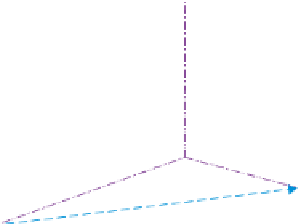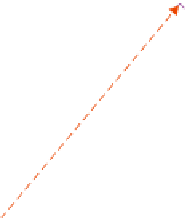Biomedical Engineering Reference
In-Depth Information
F
y
p
M
y
p
M
x
p
p
F
F
z
p
Pelvis
M
z
p
o
r
p
y
M
y
zmp
F
y
zmp
F
y
o
x
M
x
o
F
x
zmp
o
y
M
F
x
o
F
z
zmp
o
r
zmp
ZMP
O
F
z
o
z
M
z
o
FIGURE 7.9
Resultant active forces at the pelvis, origin and ZMP.
Using
Equations (7.17) and (7.18)
, the ZMP position is uniquely obtained as
follows:
M
z
F
y
;
M
x
F
y
z
zmp
5
2
x
zmp
5
(7.19)
In addition, the resultant active moment at ZMP along the y-axis is also
obtained from Equation
(7.17)
:
M
zmp
y
M
y
1
F
x
z
zmp
2
F
z
x
zmp
(7.20)
5
There are two major advantages of using the foregoing ZMP formulation: one
is that the calculation of resultant active forces from the equations of motion is
very convenient and straightforward; the other is that the resultant active forces
(M
zmp
, F
zmp
) and position
o
r
zmp
of the ZMP are obtained simultaneously. The
resultant active forces at ZMP are used to calculate the GRFs.
7.8
Calculating ground reaction forces (GRF)
The resultant GRF are located at the center of pressure (COP), which coincides
with the ZMP as long as the dynamic system is in balance (
Goswami, 1999;
Sardain and Bessonnet, 2004
). Thus, the transient position of the resultant GRF
can be obtained by tracing the ZMP position
o
r
zmp
using
Equation (7.19)
.












































Search WWH ::

Custom Search